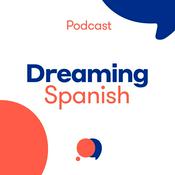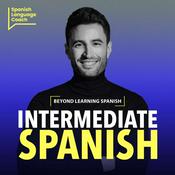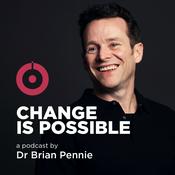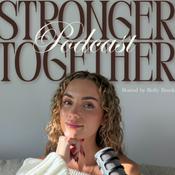84 episodes
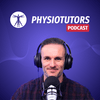
From Core to Kick: The Pelvis as the Missing Link in Hamstring and Groin Injuries ft. Nick van der Horst
05/12/2025 | 1h 7 mins.
Summary In this conversation, Dr. Nick van der Horst, a sports physiotherapist, discusses the significant impact of hamstring and groin injuries in football, emphasizing the importance of pelvic control in injury prevention and rehabilitation. He highlights the prevalence of these injuries, the role of eccentric strength training, and the need for comprehensive screening and assessment methods. Dr. van der Horst shares insights on how to modify pelvic posture and control during rehabilitation, providing practical advice for integrating these concepts into injury prevention programs. The discussion also covers the relationship between pelvic mechanics and performance optimization, making it clear that understanding these factors is crucial for effective rehabilitation and injury prevention in sports. Guest Dr. Nick van der Horst is a sports physiotherapist and rehabilitation specialist with deep expertise in football medicine. He's currently part of the medical staff at PSV Eindhoven's first team, where he focuses on on- and off-field rehab, return-to-play strategies, and injury prevention.Nick earned his PhD at UMC Utrecht with a thesis on preventing hamstring injuries in male soccer players. Over the years, he has worked with organizations like the KNVB and Go Ahead Eagles, and he's the founder and CEO of SoccerDoc, a platform dedicated to improving football medicine through research, education, and clinical care.His work centers on maximizing football performance by reducing injury burden and creating evidence-based, player-centered rehab and prevention programs. Timestamps 00:00:00 Intro and guest bio 00:01:00 How big are hamstring and groin injury problems (incidence and time loss)? 00:04:04 Clarifying the topic: SI joint issues vs pelvic position/control 00:04:42 Why are pelvic control and positioning key for hamstring and groin pain? 00:12:44 Sponsor: PhysioTutors Premium Membership 00:15:28 Screening and assessment: Go-to markers for pelvic posture/control issues 00:19:27 Do you need motion capture or other equipment to assess pelvic control? 00:22:17 How do you differentiate pelvic-mechanics-related hamstring issues from tissue-specific or neural problems? 00:27:12 Common lumbopelvic patterns in recurrent hamstring and groin injuries 00:25:38 Sponsor: WriteUpp Practice Management 00:37:54 Groin pain: Is pelvic posture/control a cause or a consequence? 00:41:50 How modifiable is pelvic posture and control? 00:44:51 Rehab progression: Early vs late stages when focusing on pelvic control 00:48:54 Do you use basic core/lumbopelvic exercises (bird dog, dead bug, pelvic tilts)? 00:52:13 Have improvements in pelvic control reduced hamstring/groin injuries in practice? 00:54:46 Sponsor: PhysioTutors Online Courses 00:56:13 Case experience: Moments that shifted perspective on pelvic role 01:03:08 Practical advice for integrating pelvic control into prevention/rehab in football 01:05:49 Where to find Dr. Nick van der Horst 01:06:29 Outro Bonus Material Download the referenced transcript including PubMed Links and a high-resolution infographic on this episode as part of your Physiotutors membership on the Physiotutors App. Download the Free App now Follow our Podcast on: Spotify | Apple Podcasts

An Introduction to Neurocentric Training with Jannik Schuster
03/11/2025 | 54 mins.
Summary In this podcast episode, neuroathletic performance and pain coach Jannik Schuster discusses neurocentric training, a method focusing on the brain and nervous system to enhance performance and alleviate pain. Schuster explains how he discovered this approach through personal experience with injuries and highlights its effectiveness in reducing inflammation and pain. He defines neurocentric training as targeting brain and nervous system interactions to improve performance, distinguishing it from traditional training methods that focus on biomechanical structures. Schuster emphasizes the significance of understanding the nervous system's role in pain and movement limitations, advocating for individualized approaches to address specific nervous system needs. He also discusses the integration of neurocentric training with traditional practices, the impact of visual, vestibular, and proprioceptive inputs, and the potential for neurocentric training to become more prevalent in both athletic and therapeutic settings. The conversation underscores the importance of neuroplasticity and suggests resources for those interested in exploring neurocentric training further. Guest Jannik Schuster — Neuroathletic Performance and Pain Coach, M.Sc. in Sports Science, educator, and former elite footballer. After training in the youth academy of FC Augsburg and the professional squad of FC Schweinfurt, Jannik discovered neurocentric training as a breakthrough method to unlock performance, prevent injury, and resolve pain. Educated through Z-Health and grounded in sports science, he now helps others apply neuro-based strategies for pain-free movement and optimal function Content 00:00:00 Introduction 00:00:47 Yannick's Background and Introduction to Neuroathletic Training 00:02:49 Definition and Differentiation of Neurocentric Training 00:04:36 Scientific Foundation of Neurocentric Training 00:08:39 Common Misconceptions in Neurotraining 00:10:23 Role of the Nervous System in Pain and Movement Limitations 00:11:55 Neurocentric Training in Rehab 00:14:42 Assessment and Testing in Neurocentric Training 00:21:46 Role of Visual, Vestibular, and Proprioceptive Inputs 00:25:19 Typical Neuroperformance Training Session 00:28:17 Effects Observed in Performance-Oriented Athletes 00:31:01 Athlete Feedback on Neuro Training 00:35:38 Prevalence of Neurocentric Training in Elite Sports 00:37:29 Integration with Traditional Training and Therapy 00:40:08 Incorporating Neurocentric Elements in Daily Work 00:47:03 Striking Changes Observed Through Neuro Training 00:49:23 Resources for Learning About Neurocentric Training 00:51:27 Conclusion and Final Thoughts Bonus Material Download the referenced transcript including PubMed Links and a high-resolution infographic on this episode as part of your Physiotutors membership on the Physiotutors App. Download the Free App now Follow our Podcast on: Spotify | Apple Podcasts

Beyond Whiplash: Modern Physiotherapy for Prolonged Post-Concussion Symptoms with Melvin Pitz and Cornel Tol
01/10/2025 | 1h 8 mins.
Summary In this episode, Melvin Pitz and Cornel Tol from the Headache, Pain, and Concussion Training Institute (HPCTI) delve into the intricacies of managing concussions and post-concussion symptoms. They advocate for using the term "prolonged post-concussion symptoms" over "mild traumatic brain injury" to reduce the nocebo effect associated with the latter. The discussion highlights the importance of a multidisciplinary and biopsychosocial approach in diagnosis and treatment, emphasizing the significance of early intervention and patient education. Melvin and Cornel share insights into diagnostic criteria, the impact of framing on patient outcomes, and the gaps in current practices, particularly in the Netherlands. They stress the need for physiotherapists to be proactive in education and networking to bridge the knowledge gap in concussion management. The episode also touches on the neurophysiological aspects of concussion, the shortcomings of monodisciplinary approaches, and the potential of a treatable traits approach for better patient outcomes. Listeners are encouraged to rethink the role of physiotherapy and consider the broader implications of prolonged symptoms, including psychological and social factors. The episode provides practical advice for physiotherapists and healthcare professionals on how to improve their practice and patient care in the context of concussions. Guests Today's guests are Melvin Pitz and Cornel Tol from the HPC-TI — short for Headache, Pain & Concussion Training Institute. They're on a mission to educate and empower healthcare professionals with cutting-edge, evidence-based strategies to manage headache, pain complaints, and mild traumatic brain injury. With a strong clinical background and a critical view on how care is currently delivered, they're pushing for a multidisciplinary and biopsychosocial approach that actually works — in the clinic, and beyond Content 00:00 Intro 00:41 Definition of PPCS 03:06 Diagnostic Criteria 06:35 Gaps in recognizing PPCS 09:47 Why patients are misdiagnosed 14:24 Sponsor 15:00 Prognostic Factors to develop prolonged symptoms 18:48 Rethinking Physiotherapists' role in treating PPCS 24:40 Neurophysiology of PPCS 28:28 Why monodisciplinary approaches fail 33:12 Diagnosis & Decisionmaking 35:48 Sponsor 37:04 Biggest pitfalls 38:44 Treatment 50:48 Interesting Case Studies 57:38 Return to work/play 01:03:21 Opinion on high-impact sports 01:05:25 Myths to bust 01:06:26 Closing thoughts 01:07:37 Contact info & Outro Bonus Material Download the referenced transcript including PubMed Links and a high-resolution infographic on this episode as part of your Physiotutors membership on the Physiotutors App. Download the Free App now Follow our Podcast on: Spotify | Apple Podcasts

Foot First: Rethinking Intrinsic Strength & Injury Rehab with Dr. Sue Mayes
01/9/2025 | 45 mins.
Summary In this episode, we welcome Dr. Sue Mayes, a distinguished physiotherapist and senior lecturer at La Trobe University, who is renowned for her expertise in injury prevention and rehabilitation, particularly in elite dancers and athletes. Dr. Mayes discusses the significance of foot intrinsic muscles, focusing on their role in ballet and sports injuries. She explains common issues like hallux valgus and foot arch control, emphasizing the importance of intrinsic muscle strengthening to enhance performance and reduce injury risk. Dr. Mayes shares insights into effective foot strengthening techniques, such as banded exercises and stair running, while highlighting the limitations of traditional exercises like toe doming. She also explores the impact of footwear, advocating for a gradual adaptation to minimalist shoes. The conversation covers the role of intrinsic muscles in chronic conditions like ankle instability and shin splints, and the need for a comprehensive approach that includes calf and hip strengthening. Listeners gain practical tips on creating foot strengthening programs, selecting appropriate exercises, and understanding the nuances of rehabilitation across different sports. Dr. Mayes underscores the importance of balancing foot strength and emphasizes the need for proper footwear to prevent stress fractures. The episode concludes with a call to acknowledge the lateral foot muscles and their role in distributing load effectively. Content 00:00 Intro 01:01 What are Foot Intrinsics? 01:40 Most common foot/ankle injuries in Ballet 02:20 Hallux Valgus 04:30 Taping for Hallux Valgus 06:12 Quantifying intrinsic muscle strength 08:03 Foot Arch 09:45 Sponsor 10:35 The dome exercise 12:30 Common misconceptions 13:43 Footwear 17:40 Intrinsic Foot muscle weakness as risk factor 19:50 Performance Impact 22:25 Building a foot strengthening program 27:32 Sponsor 28:44 Strength program progression 30:50 Balance program 32:43 Focus on Abductor Hallucis 34:42 What else to focus on? 36:15 Plyometrics 38:25 Footballer are like Ballerinas 41:12 What clinicians should know about feet 42:26 Sue's closing thoughts 44:10 Contact info & Outro Bonus Material Download the referenced transcript including PubMed Links and a high-resolution infographic on this episode as part of your Physiotutors membership on the Physiotutors App. Download the Free App now Follow our Podcast on: Spotify | Apple Podcasts

Hamstrings under the Microscope with Jack Hickey
04/8/2025 | 1h 1 mins.
Description In this episode, Dr. Jack Hickey, a leading researcher in hamstring injuries, shares valuable insights into the complexities of hamstring rehabilitation and injury prevention. He discusses the common misconceptions surrounding hamstring rehab, emphasizing the importance of understanding the adaptations targeted by specific exercises rather than simply mimicking injury mechanisms. Dr. Hickey also delves into the significance of hamstring muscle architecture, particularly the role of fascicle length as a modifiable risk factor for injury. He highlights recent research comparing the effectiveness of exercises like Nordic hamstring exercises and Romanian deadlifts in enhancing fascicle length. Dr. Hickey further explores his pioneering work in pain threshold rehabilitation, explaining how allowing low to moderate levels of pain during rehab can lead to better strength and muscle adaptation without delaying return-to-play timelines. He also touches on the fragility index as a measure of the robustness of risk factors associated with hamstring injuries. Throughout the conversation, Dr. Hickey underscores the importance of individualized rehab programs, incorporating both on-field and gym-based conditioning, and the need to prioritize fundamental principles such as load management and athlete well-being. He also provides a glimpse into ongoing and future research endeavors aimed at advancing our understanding of hamstring injury mechanics and prevention strategies. This episode is packed with practical advice and evidence-based approaches for clinicians, making it a must-listen for those involved in sports medicine and rehabilitation. Guest Jack Hickey is a leading researcher in the field of hamstring injuries. Jack is currently based at Maynooth University in Ireland, where he joined in 2023 as the first academic in the Department of Sport Science and Nutrition.Before that, he was a Senior Lecturer at the Australian Catholic University in Melbourne and part of the SPRINT Research Centre, focusing on sports performance, injury, and rehab. His PhD centered on hamstring strain injuries and pain-threshold rehab – a body of work that earned him multiple national awards, including the ESSA Medal for best PhD thesis in Exercise and Sport Science.Beyond academia, Jack is an accredited Exercise Physiologist with over a decade of experience treating athletes from all levels—especially those dealing with hamstring injuries and ACL reconstructions. Content 00:00 Intro 01:31 Why the interest in the hamstrings? 03:41 Transitioning from Australia to Ireland 06:05 Common Misconceptions in Hamstring Rehab 13:09 sponsor 13:46 How to measure fascicle length 16:07 Pain threshold rehabilitation explained 21:55 But there's more than pain levels 27:51 How to modify fascicle length 30:01 Nordic Hamstring Curls vs. RDLs 35:05 sponsor 36:08 Which exercises favor different parts of the hamstrings 40:54 Ideal eccentric loading parameters 43:40 What is the Fragility Index? 49:49 Describing Return to Play Criteria 52:47 Hamstring Rehab in the ideal world 5 6:15 Current Hamstring Research Highlights 59:32 Jack's closing thoughts 01:00:26 Contact Info & Outro Bonus Material Download the referenced transcript including PubMed Links and a high-resolution infographic on this episode as part of your Physiotutors membership on the Physiotutors App. Download the Free App now Follow our Podcast on: Spotify | Apple Podcasts
More Education podcasts
Trending Education podcasts
About Physiotutors Podcast
Listen to Physiotutors Podcast, The Comeback with Brenda Dennehy and many other podcasts from around the world with the radio.net app

Get the free radio.net app
- Stations and podcasts to bookmark
- Stream via Wi-Fi or Bluetooth
- Supports Carplay & Android Auto
- Many other app features
Get the free radio.net app
- Stations and podcasts to bookmark
- Stream via Wi-Fi or Bluetooth
- Supports Carplay & Android Auto
- Many other app features


Physiotutors Podcast
download the app,
start listening.










